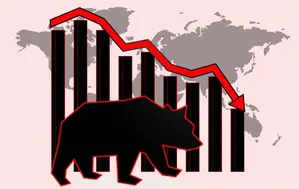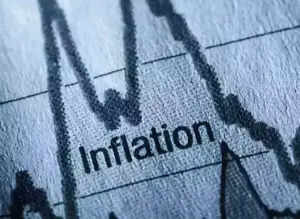Apnī marzī se kahāñ apne safar ke ham haiñ
Ruḳh havāoñ kā jidhar kā hai udhar ke ham haiñ
Kisi ke vaste raahen kahan badalti hain
Tum apne aap ko khud hi badal sako to chalo
I remembered this Urdu couplet by Nida Fazli when I thought about the grim economic situation we are in. I strongly believe that this is apt for today’s situation.
The biggest global story of this week was the US President Donald Trump announcing reciprocal tariffs. America will now charge the same tariff that other countries are imposing on its goods and services. Basically, a tit-for-tat. This has shaken India’s auto and pharma sectors. In auto, India charges over 100% tariff on cars imported as completely built units. The US currently imposes only a 2.5% tariff on imported cars and 25% on light trucks. If the U.S. were to raise reciprocal tariffs, Indian exports to the US (e.g., Mahindra’s tractors, SUVs, Bajaj and TVS two-wheelers) would become uncompetitive by a mile. Indian manufacturers will be forced to set up plants in the US to escape such high tariffs and stay competitive in that market. This would throw the domestic industry into turbulence as it would impact exports, and consequently investment and employment in India.
Also Read: A Trump card for India?

Back home, if the Indian government is forced to lower auto tariffs, the domestic industry will face high-quality foreign competition, giving Indian automakers and local units of foreign companies—long shielded by high tariffs—a run for their money. The silver lining here is that Indian consumers may rejoice as they can get a wider choice. Having said that, it will not be the auto component makers, not the Original Equipment Makers, who may face the bigger brunt of Trump tariffs.
Similar is the case with the pharma sector, though experts say there is scope for negotiations given the penetration of Indian generics in the US.
In a nutshell, till now the US financed its huge trade deficit with other countries as the dollar has been the global reserve currency and could afford to outsource its manufacturing. But with concerns over job losses and ‘Make America Great Again’ sentiment taking root, the US is hankering to bring manufacturing back to its soil.
Also Read: India may face up to 0.6% hit to GDP from Trump’s reciprocal tariffs: Goldman Sachs
Crestfallen stock market
The reciprocal tariff move has also sent the Indian stock market, which has been falling for the last few months, into a bigger spin. Interestingly, till the last week, financial analysts, especially stock brokers and fund managers, were citing scores of reasons why the bull market is on, and how it is roaring ahead with elephantine power. This, despite the rupee taking a nosedive, Trump dictating terms and growth projections for India being marked lower. Mid and small-cap stocks have now taken a big tumble. In fact, the fall is such that the big bulls (big or known investors) have also lost their wealth.

My question here is whether this fall is here to stay for the long term or is a price correction. While we can debate over it, I am sure, no one will disagree that half of the drop is driven by Trump’s policies.
India story: Heading toward normalisation?
On the other hand, if we look at the fundamentals, yes, the macro data is positive with high frequency indicators portraying a bullish picture. But reality is not as rosy as is being depicted. India Inc has shown weaker growth in the third quarter results and the poor performance may continue in the next quarter as well. Consumption has slowed down, especially urban, though rural is still holding the fort. Retail consumption is also limited to only few brands. Most of the retail players are crying.

But the big hopes of normalisation are still alive in the capital markets. However, cracks have started to appear as higher valuations that seemed unjustifiable in the light of attractive markets elsewhere, FIIs have accelerated selling.
Also Read: How will Donald Trump’s reciprocal tariffs play out for India
The way out
I think here we need to keep two things in mind.
First, Trump is unpredictable and will do anything and everything that will benefit America. This also means that not just India but Asia as a whole needs to have a strategy in place to deal with it. In reality, there is very little that Asia, including India, can do about the situation. India has enjoyed the low tariffs in the US, but the new tariffs will make India Inc sweat.
Despite what many believe, America’s economic power is not declining. With 4% of the worlds people, it generates 25% of global output. A share unchanged since 1980, Economist magazine wrote in a 2023 issue.
Second, we enjoyed prosperous years after the pandemic with growth even printing over 8% in a quarter last year. But let’s note that this year, from the Reserve Bank of India to the Economic Survey to the National Statistics Office to the International Monetary Fund, everyone has lowered their growth projections for India.
While the picture still looks rosy, the reality is that we were not in great shape even before the pandemic. Private capex, inflation, and low growth were still the major challenges five years back.
So, the question is where are we today? Is the pent-up demand after Covid over? Is the market rally, which many first-time investors believed would never end, over?
The foreign institutional investor sell-out came as a big setback. But now there are other problems. The market saw a big rally post pandemic than ever. Thanks to the SIP deluge, the mutual fund AUM crossed Rs 60 lakh crore in no time. Now there is so much froth that many fund managers prefer to sit idle on a huge pile of cash.
I think the impact of inflation is much higher than we estimate. I often overhear people complaining about high prices. If inflation is higher, consumption will come down and drag growth as well. Banks have already given one signal by increasing provisions to 20% this quarter and suddenly I see the rise in advertisements for the auction of distressed assets in newspapers.
In my observation, no trend is permanent. Change is far faster than you could think before adopting it.
So are we back to normalisation? I think so. Let’s set our sails well and steer our ship at a steady speed as the water was muddy. In between, we will witness pouring rain and gusty tailwinds that will propel us forward… soon, the clouds may clear, and we will find ourselves in calmer waters. Let’s move ahead.
(Editor’s note is a column written by Amol Dethe, Editor, ETCFO. Click here to read more of his articles exploring several buzzing topics)






